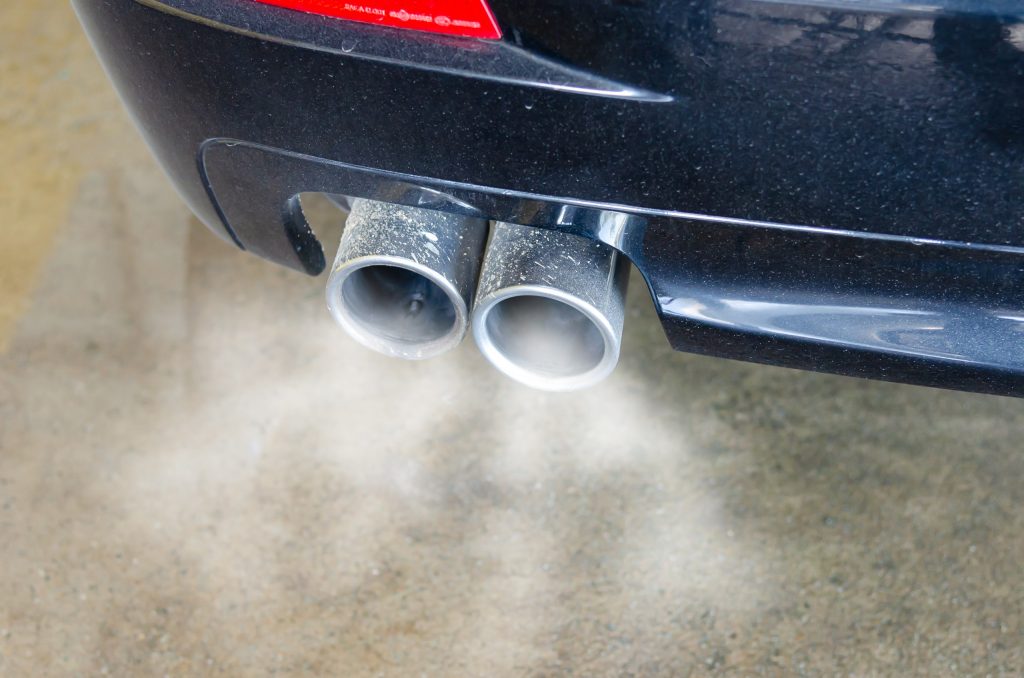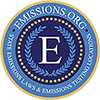In our collective endeavor to safeguard the environment, comprehending emissions testing holds paramount importance.
This meticulous process ensures that vehicles adhere to stringent standards, effectively curbing their contribution to air pollution.
In this exploration, we delve into two vital forms of emissions testing: E-Check and Emission Inspection.
These tests play a pivotal role in upholding both regulatory compliance and environmental well-being.
Understanding their nuances empowers vehicle owners to make informed decisions, ultimately contributing to a cleaner, healthier atmosphere for all.

Understanding Emissions Testing
Emissions testing is a critical process that evaluates the amount of harmful gases a vehicle emits into the environment. This assessment is crucial for reducing air pollution and protecting public health. It’s a cornerstone of environmental policy in numerous states, ensuring that vehicles meet specific standards to limit their impact on air quality.
- Reducing Harmful Gases: Emissions testing primarily targets pollutants like carbon monoxide, nitrogen oxides, and hydrocarbons, all of which can have detrimental effects on the environment and human health.
- Legal Requirement: In many states, undergoing emissions testing is mandatory, and non-compliance may result in penalties or restrictions on vehicle operation.
- Part of a Larger Environmental Effort: This testing is part of broader initiatives to improve air quality and reduce the overall environmental footprint of vehicles on the road.
What is E-Check?
E-Check is a distinct emissions test, mainly required in particular states such as Ohio and Illinois. This test focuses on measuring a vehicle’s emissions using specialized equipment while the vehicle is running on a dynamometer.
- State-Specific Requirement: E-Check is not universal; it’s mandated in select states to meet their individual air quality goals.
- Specialized Equipment: During E-Check, a vehicle is placed on a dynamometer, which acts like a treadmill for cars. This setup allows precise measurement of tailpipe emissions while the vehicle is running.
- Tailpipe Emission Focus: E-Check primarily concentrates on tailpipe emissions, evaluating the levels of harmful gases like carbon monoxide (CO), nitrogen oxides (NOx), and hydrocarbons (HC). This ensures compliance with state-mandated emission standards.
- Onboard Diagnostics: In addition to tailpipe measurements, modern E-Check systems also tap into a vehicle’s onboard diagnostics (OBD) system. This involves checking for any fault codes or malfunctions that could affect emissions.
E-Check is an essential step for vehicle owners in states where it’s required, ensuring that their vehicles meet specific emission standards and contribute to cleaner air quality. Understanding this process is crucial for compliance and environmental responsibility.
Benefits and Limitations of E-Check
E-Check, while advantageous in many ways, comes with its own set of strengths and limitations. Understanding these aspects aids vehicle owners in making informed decisions about emissions testing.
Benefits
E-Check offers significant advantages in reducing harmful emissions and improving air quality. Understanding these benefits is crucial for vehicle owners looking to make a positive environmental impact.
- Reduced Emissions: E-Check plays a pivotal role in curbing harmful pollutants released into the atmosphere. By ensuring vehicles meet emission standards, it significantly contributes to a reduction in air pollution levels.
- Improved Air Quality: Vehicles that pass E-Check emit fewer harmful pollutants, leading to cleaner and healthier air. This benefits not only the environment but also the well-being of individuals in the community.
Limitations
While E-Check proves beneficial, it’s important to acknowledge its constraints. Being aware of these limitations allows vehicle owners to plan and make informed decisions regarding emissions testing.
- Limited Coverage: E-Check is currently mandated in specific states, which may pose challenges for out-of-state travelers or individuals residing in regions without this requirement. This may necessitate additional planning for compliance.
- Vehicle Age Restrictions: Newer vehicles often meet stringent emissions standards by default. This means they may be exempt from E-Check requirements. While this is a benefit for owners of newer cars, it can miss an opportunity for further emissions improvement on older vehicles.
Emission Inspections: A Comprehensive Overview
Emission inspections differ significantly from E-Check in their scope and the variety of tests conducted. These inspections involve multiple assessments, including visual inspections, exhaust gas analysis, and onboard diagnostics, providing a thorough evaluation of a vehicle’s emissions.
- Visual Inspections: During emission inspections, technicians visually examine various components of the vehicle’s emission control system. This includes checking for visible leaks, damaged components, or missing parts.
- Exhaust Gas Analysis: Emission inspections include measuring the gases emitted from the vehicle’s exhaust. This detailed analysis identifies the levels of harmful pollutants like carbon monoxide (CO), nitrogen oxides (NOx), and hydrocarbons (HC).
- Onboard Diagnostics (OBD): Technicians connect to the vehicle’s OBD system to check for any error codes or malfunctions that might affect emissions. This step ensures a comprehensive assessment of the vehicle’s overall health.
Benefits and Limitations of Emission Inspections
Explore the advantages and potential drawbacks of emission inspections. Understanding these aspects helps vehicle owners navigate the testing process more effectively and make informed decisions.
Benefits
Emission inspections provide a detailed evaluation of a vehicle’s environmental impact. Discover the advantages of these assessments, including their ability to detect hidden issues early.
- Comprehensive Assessment: Emission inspections offer a comprehensive evaluation of your vehicle’s environmental impact. Unlike E-Check, which primarily focuses on tailpipe emissions, emission inspections encompass a wider range of tests, providing a more thorough assessment.
- Detects Hidden Issues: These inspections can uncover underlying problems that contribute to excessive emissions. By identifying issues early, vehicle owners have the opportunity to address them before they worsen, which can save money in the long run and reduce their impact on the environment.
Limitations
Emission inspections, while insightful, have their limitations. It’s crucial to be aware of these constraints to make informed decisions regarding emissions testing.
- Potential Repair Costs: One significant limitation of emission inspections is that vehicles that fail may require costly repairs to become compliant. This can include fixing issues with the exhaust system, catalytic converter, or other emission-related components. Such repairs can be an unexpected expense for vehicle owners.
Key Differences Between E-Check and Emission Inspections
Understanding the differences between E-Check and emission inspections is vital for vehicle owners to determine which test is required in their specific location.
E-Check
E-Check is a specialized emissions test mandated in specific states. It employs advanced equipment to precisely measure a vehicle’s emissions, ensuring compliance with state regulations.
- Tailpipe Emissions: E-Check primarily measures tailpipe emissions, focusing on the gases released from your vehicle’s exhaust.
- State Specific: It’s applicable in select states, and its requirements vary. Not all states mandate E-Check.
- Specific Pollutant Levels: E-Check zeroes in on specific pollutant levels, such as carbon monoxide (CO), nitrogen oxides (NOx), and hydrocarbons (HC). It aims to ensure compliance with state-mandated emission standards.
Emission Inspection
Unlike E-Check, an emission inspection offers a more comprehensive evaluation of a vehicle’s environmental impact.
- Comprehensive Testing: Emission inspections involve various tests, including visual inspections of emission-related components, exhaust gas analysis, and checks of the onboard diagnostics (OBD) system.
- Widespread Implementation: Emission inspections are widely implemented across states, making them a common requirement for vehicle owners in many regions.
- Comprehensive Evaluation: Unlike E-Check’s focus on tailpipe emissions, emission inspections provide a comprehensive evaluation of a vehicle’s emissions. This broader assessment considers various factors to determine compliance.
Finding E-Check and Emission Inspection Centers Near You
Ensuring a smooth emissions testing experience begins with finding a reputable testing center nearby.
- Check State Resources: Start by visiting your state’s Department of Motor Vehicles (DMV) website. Most states provide a list of authorized testing centers. This official resource ensures you choose a center that meets state standards.
- Ask for Recommendations: Seek advice from local auto repair shops or fellow vehicle owners. They can recommend trusted testing centers based on their experiences. Personal recommendations often carry valuable insights.
- Verify Certification: Before making a final decision, ensure the chosen testing center is accredited and equipped to perform the required tests. Accreditation is a testament to the center’s reliability and adherence to quality standards.
Next Steps for Emission Compliance
Now that you have a good understanding of E-Check and emission inspections, it’s time to take proactive steps to ensure your vehicle complies with state requirements.
- Stay Informed: Keep yourself updated by regularly checking your state’s emissions testing regulations. State requirements can change over time, and it’s crucial to be aware of any updates or alterations to the testing process. This knowledge will help you stay compliant.
- Schedule Timely Tests: Mark your calendar with the appropriate testing dates. Missing the scheduled testing date can result in penalties and fines, so ensure you are aware of when your vehicle needs to be tested and plan accordingly.
- Address Repairs Promptly: If your vehicle doesn’t pass the emissions test and requires maintenance or repairs, make sure to attend to these issues promptly. Delaying necessary repairs can lead to continued non-compliance and potential fines. Resolving problems swiftly not only ensures compliance but also contributes to cleaner air.
Taking these proactive steps will not only help you meet state emissions requirements but also reduce your vehicle’s environmental impact. It’s an essential part of being a responsible vehicle owner and contributing to a cleaner and healthier environment for all.
Get in Touch for Expert Guidance
Navigating emissions testing and enhancing your environmental efforts can be complex. Our knowledgeable team is ready to assist you every step of the way. We offer valuable insights and solutions without sales pressure, helping you make informed decisions and contribute to a cleaner environment while potentially boosting your revenue.
Don’t hesitate to contact us for guidance tailored to your specific needs. Reach out today to explore how our expertise can not only ensure compliance but also enhance your efforts to reduce your carbon footprint.

No comment yet, add your voice below!